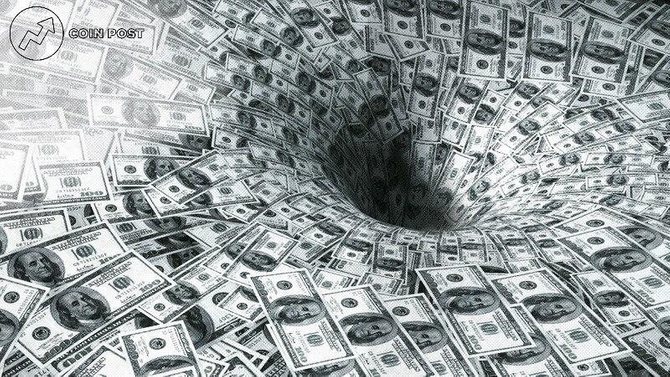
The success of a company is usually judged by profit. However, there is another indicator that can tell a lot about how the company is doing — cash flow, which is one of the most important criteria for the success of European companies.
It allows you to really assess what means the company operates with, and often does not coincide with the figures presented in other reporting documents, such as the balance sheet or income statement.
In this article, we will take a closer look at what cash flows are, what they show in the company's activities, what they are and how to calculate them correctly.
- What is Cash Flow
- What Cash Flow Shows
- What is Net Cash Flow
- Classification and Types of Cash Flows
- How to Calculate Net Cash Flow
What is Cash Flow

Cash flow is an economic indicator that reflects the amount of money transferred within the enterprise in general or in individual structural units. It should be noted that we are talking about both cash and deposited in the company's accounts.
When calculating the cash flow, both the profit received as a result of any actions of the company and all its costs are taken into account.
Cash flow is usually calculated for the past financial year, however, in some cases, especially at the first stages of a company's launch, it can be produced quarterly or as needed, for example, when the project cannot even reach self-sufficiency after the period planned for this period. Cash flow allows you to build both long-term and short-term development strategies.
What Cash Flow Shows

Cash flow data is of particular value to investors, since the document allows you to see how much of the total amount of funds remained at the disposal of the company, and how much went to cover expenses.
Based on this, there are positive cash flows (show the inflow of money) and negative (reflect the outflow of money). Accordingly, based on this data, investors can determine how profitable it is to invest in such a company.
Positive Cash Flow
Positive cash flow is the funds that go to the company, i.e. inflow of money into the enterprise.
The following items of income form a positive cash flow:
- Revenue from the sale of goods;
- Income from the provision of services;
- Part of the profit received if the company participates in common business with other enterprises;
- Dividends and interest payments;
- Investor deposits;
- Grant aid from charities;
- Difference from exchange rates.
Negative Cash Flow

Negative cash flow is the funds spent by the company to cover various costs and expenses, i.e. outflow of money from the company.
The following types of payments form negative cash flow:
- Production cost;
- Reward;
- Depreciation of equipment;
- Research;
- Improving working conditions;
- Household expenses;
- Taxes.
What is Net Cash Flow

Net cash flow is the difference between positive and negative cash flow, i.e. between the receipt of funds in the company and the necessary expenses. Net cash flow is one of the most important indicators, as it reflects the level of the company's well-being and determines the interest of investors in it.
Net cash flow allows investors to determine how profitable investments in a particular company are:
- If cash flow is above zero, then we can talk about investment attractiveness;
- If the cash flow is below zero or equal to it, investments in this company are considered high-risk.
The net cash flow of any company is formed from the following main activities:
- Operating room — funds received or used in the main activities of the company. In this case, a positive cash flow is made up of money received from the sale of goods or the provision of services, advances from customers; negative — remuneration of employees, cost of goods, taxes.
- Investment — funds associated with previous investments. The inflow is made due to income from the sale of intangible assets, and the outflow is due to the acquisition of investment objects and the expansion of the company's investment activities.
- Financial means funds intended for the expansion of operating and investment activities. The inflow of money occurs through the receipt of loans and credits and the issuance of securities, the outflow through the repayment of loans and borrowings, and the payment of dividends.
Classification and Types of Cash Flows

Cash flow allows you to assess the correctness of the company's activities and see the potential prospects for its development. In this regard, there are several types of cash flow:
- Balance: positive and negative. The first shows the company's income (inflow of funds), the second — its expenses (outflow of funds).
- By type of economic activity: operating (direct income and expenses from core activities), financial (sale of long-term assets and acquisition of property in order to obtain long-term profit) and investment (taking and repaying loans and borrowings).
- By management levels: the cash flow of the company as a whole, individual divisions and branches, individual projects and operations.
- In relation to the company: internal (funds for operations within the company) and external (for transactions with counterparties and partners).
- Calculated: cumulative (the total of positive and negative cash flows) and net (the difference between positive and negative cash flows).
- By the level of sufficiency: excessive (when the inflow of funds significantly exceeds the needs of the company, i.e. when revenues are much higher than expenses) and scarce (outflow of funds significantly exceeds their inflow to the company).
- By period: short-term (income and expenses of the company for a period of up to one year) and long-term (inflow and outflow of money for a period of more than one year).
- By importance for the formation of a report on financial activities: priority (income and expenses in which a large amount of money is involved) and secondary (insignificant expenses and incomes, which have almost no effect on the results of the formation of the final cash flow).
- By point in time: current (cash flow on the current day of calculation) and future (an approximate indicator of cash flow on a certain day in the future).
If we consider the classification of cash flow, according to international accounting standards, then there are three types:
- Cash flow for operating activities — the flow of money from the sale of goods or the provision of services, as well as the costs of remuneration of employees of the company and contractors.
- Cash flow for investment activities — all income and expenses associated with any investments of the company - both incoming and outgoing.
- Cash flow for financial activities — funds related to raising capital, as well as loans and borrowings.
The classification of cash flows into types allows for accounting, analysis and planning of company finances.
How to Calculate Net Cash Flow

How to calculate cash flow:
- Determine the period for which the calculation will be made.
- Determine the purpose for which you need to calculate the cash flow.
- Highlight income items and calculate their total value.
- Highlight pay items and calculate their total value.
- Use one of the cash flow calculation formulas.
First of all, it should be said that cash flow is calculated in relation to certain time periods.
For the calculation, current data are taken at the beginning or at the end of the zero segment.
When calculating cash flow, different types of prices can be used:
- Current, i.e. relevant on the day of calculation, excluding inflation indicators;
- Forecasted — the forecasted inflation rate multiplied by current prices is used for the calculation;
- Deflated — uses forecasted prices divided by the underlying inflation index.
As a rule, cash flow is calculated in the currency in which the company conducts its main business.
The main methods for calculating a company's cash flow are direct and indirect. The first is more often used, since the calculation uses the main accounting documents.As a result, you can see in what “status” the company's cash flow is: inflow (when income exceeds expenses) or outflow (when expenses prevail over income).
Cash Flow Formula

Depending on the purpose for which the calculation is needed and how accurate it should be, there are three cash flow formulas and, accordingly, three calculation methods.
Method one. It takes into account only two indicators: net cash flow received from operating activities and basic expenses.
Formula:
FCF = NPP - RFP
FCF — cash flow;
NCF — net cash flow;
PC — the main production costs.
Method two. Based on its results, it is possible to determine the reasons that led to the change in cash flow. Formula:
FCF = EBITDA - IT - RFP - NWC,
- EBITDA — profit before interest, taxes, depreciation and amortization costs;
- IT — income tax;
- NWC — net working capital change).
Method three. Used to make predictions.
FCF = EBIT * (1-tax) + DAE - PC - NWC,
- DAE - depreciation and amortization expense.
An Example of Calculating Cash Flow
How the cash flow is calculated using a real example can be seen in the video below:
Skrill: Wallet, Card, Deposit and Withdrawal, Reviews